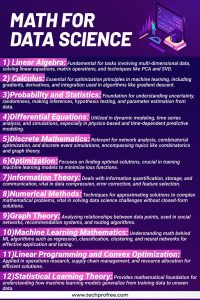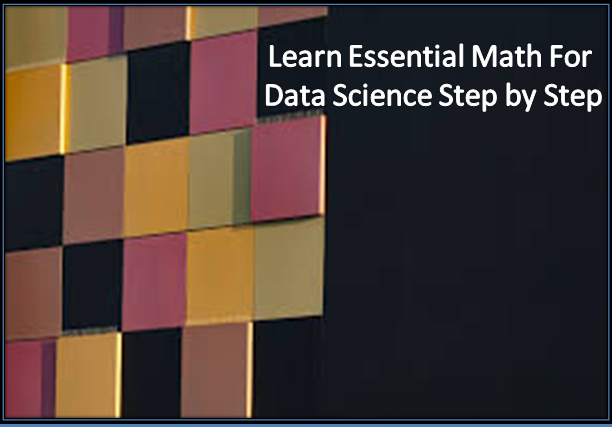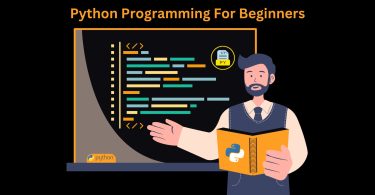Download Essential Math For Data Science Step by Step PDF Notes totally free. We no longer only apply desktop or laptop computers to access the internet. We now carry it around with ourselves in our cars, smart phones, and home appliances. Over the span of two decades, this has gradually encouraged a transformation. Data currently changed from being a tool for operations to being gathered and analyzed for less clear goals. A smart watch continuously records information about our respiration, strolling distance, and other metrics. The data is then uploaded to a cloud where it can be analyzed by several people. Computerized automobiles are recording our driving behaviors, and manufacturers are using this information to build self-driving cars. Drugstores are already stocking “smart toothbrushes,” which track brushing patterns and store that information in the cloud.
The purpose of these notes is to introduce readers to various mathematical, statistical, & machine learning fields that can be used to solve practical issues. Foundational math ideas are covered in the first four chapters covering statistics, linear algebra, probability, and practical calculus. Machine learning will be introduced in the final three chapters. The ultimate goal of instructing machine learning is for us to connect all we have learned and show how to use machine learning and analytical libraries in ways that go beyond a simple black box comprehension.
Essential Mathematics for Data Science
Mathematics structures the fundamental backbone of contemporary scientific disciplines; data science is no exception. Most contemporary data science methods have strong foundations in mathematics.
Mathematics serves as a vital toolbox. It provides the framework for identifying patterns in data and creating clever algorithms. Our main objective in creating this tutorial is to save you time while you go through the fundamental mathematical topics. Imagine being able to avoid spending months studying machine learning-related math texts cover to cover. Here, we focus exclusively on the essential elements of mathematics for data science, saving you time and letting you focus on the important stuff.
The Importance of Mathematics in Data Science
While proficiency in programming, business insight and analytical thinking are essential for excelling as a data scientist, having a thorough understanding of the underlying mathematics is invaluable. Instead of merely operating as the person behind the wheel, knowing the intricate mechanics behind algorithms provides a significant advantage in the field.
This knowledge becomes especially vital for professionals transitioning to data science from diverse backgrounds such as hardware engineering, retail, chemical processes, medicine, and business management. Although these fields may involve basic numerical calculations, the specific math skills demanded in data science can differ significantly.
Covering topics from algebra to calculus, this guide emphasizes the comprehension of data patterns, the creation of predictive formulas and the evaluation of model accuracy. Whether you’re a beginner or an aspiring expert, this guide empowers you to converse with data, making it an indispensable resource for anyone delving into.
Essential Math for Data Science
Before diving into data science, a solid understanding of fundamental mathematics is essential. A strong grasp of number theory, primes, factors and proficiency in manipulating fractions, decimals and percentages are essential foundations for understanding mathematical concepts in data science.
- Concepts of Linear Algebra
The basic ideas of linear algebra are presented in this part, beginning with vectors and associated operations as mathematical representations of data and transformations. After that, matrix algebra is covered, including multiplication and inversion, which are essential for handling transformations and data. The investigation includes eigenvalues and eigenvectors, which are essential for reducing the dimensionality of data analysis and a range of data science and machine learning applications. These basic subjects lay the mathematical groundwork required to comprehend intricate data structures.
- Essential Statistical Concepts
The main statistical ideas that are crucial to data science are covered in this section. It explains measures of central tendency such as mean, median and mode; shedding light on typical values seen in datasets. It also looks at dispersion metrics like variance and standard deviation, which shed light on the variability and spread of the data. The fundamentals of probability, including significant concepts and probability distributions, are explained and serve as the foundation for a number of data science approaches. Furthermore, key descriptive statistics methods are presented, which facilitate effective summarization and the extraction of meaningful information from complex datasets.
- Fundamental Calculus Principles
Calculus fundamentals that are essential for data science applications are covered in this chapter. The study of differential calculus centers on derivatives and their applications in everyday life. Concepts from integral calculus are discussed, highlighting the importance of integrals in data analysis, especially for topics such as cumulative distribution functions. The subject covers boundaries and continuity, which are essential concepts for comprehending mathematical behavior in modeling and data analysis at crucial junctures.
Expert Tip
It is not necessary to be an expert in complex mathematics to start working with data science. Prioritize the aforementioned fundamentals before delving into machine learning. As your machine learning skills develop, familiarize yourself with new mathematical ideas as they arise. Consider it as an organic way to improve your arithmetic skills while focusing on what’s required for the current activity. Beginning with the fundamentals and filling in the blanks when you come across them in practical applications can help you quickly understand and efficiently apply mathematical concepts.
Summary
Understanding essential mathematics is the cornerstone of proficiency in data science. It provides the fundamental framework for uncovering patterns in data, constructing intelligent algorithms and making informed decisions. This guide has been meticulously crafted to streamline your learning process, allowing you to concentrate on the critical mathematical aspects necessary for data science without getting lost in extensive textbooks.
In a nutshell, mastering fundamental mathematics is pivotal to excelling in data science. While programming and analytical skills are crucial, a deep understanding of mathematics provides a competitive edge. This article aims at key areas like linear algebra, statistics and calculus, laying the foundation for interpreting complex data patterns and creating effective models. For those transitioning from diverse fields, these mathematical concepts bridge the gap, enabling a smooth entry into data science. Expertise in intricate mathematics isn’t mandatory initially; start with basics and progress organically, aligning learning with practical applications. This approach allows efficient understanding and application of mathematical principles. Whether you’re a novice or aspiring expert, this guide empowers you to navigate the world of data science mathematics, offering a pathway to unlock the field’s vast potential.

Following topics are covered in these notes
- Basic Math and Calculus Review
- Probability
- Descriptive and Inferential Statistics
- Linear Algebra
- Linear Regression
- Logistic Regression and Classification
- Neural Networks
- Career Advice and the Path Forward
| Download |




Leave a Comment